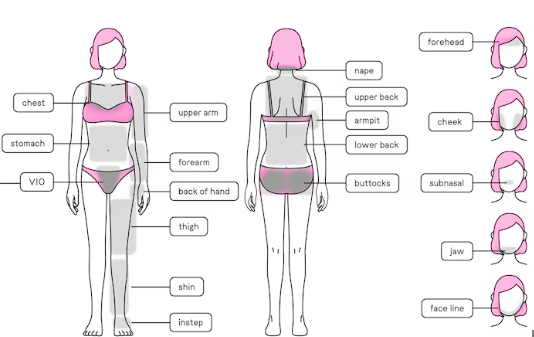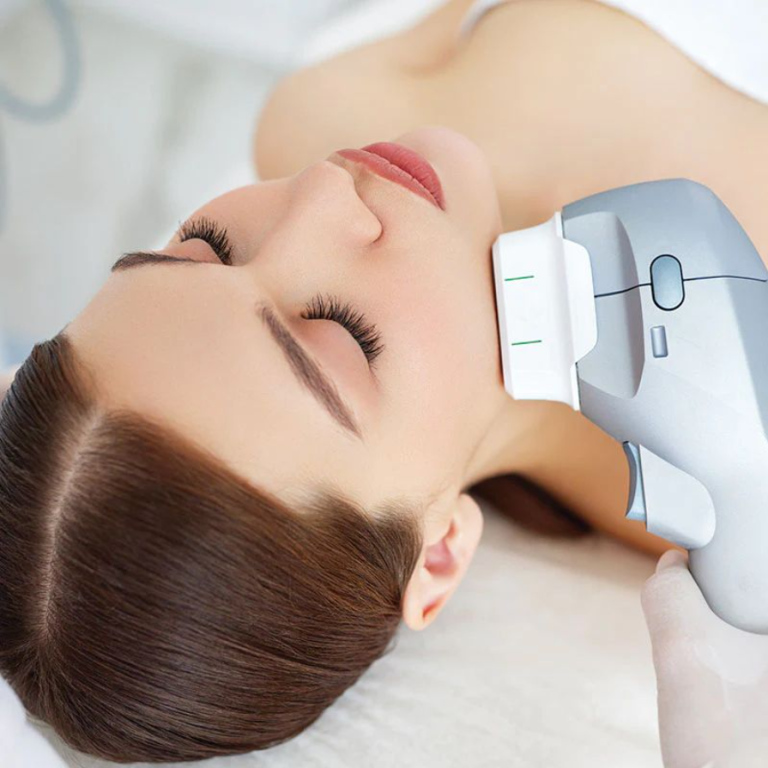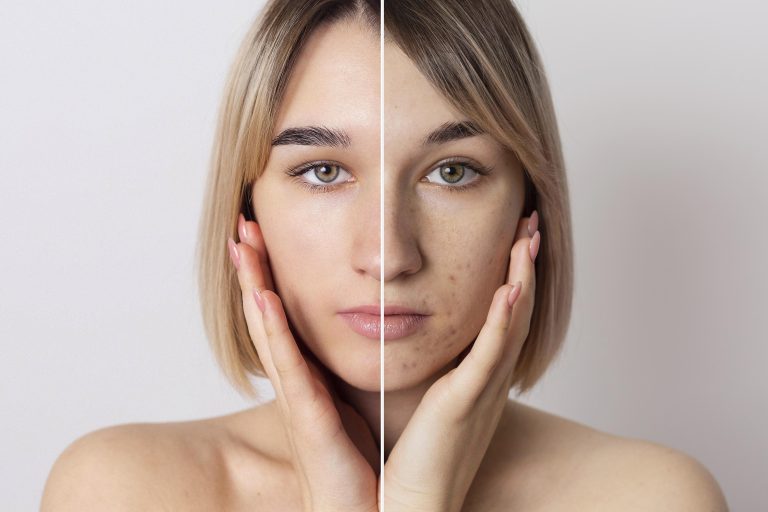Fractional lasers emit lasers that are as thin as hair and arranged in a matrix. These beams can vaporize tissues in an instant and send out a strong signal to synthesize collagen, thereby initiating tissue repair and collagen rearrangement, allowing the skin to gradually restore its normal appearance and elasticity.
Indications
- Various depressed scars (acne marks/acne scars, surgical scars, burn scars, scald scars)
- Remove pigmented lesions (freckles, sun spots, age spots, sun spots, chloasma, etc.)
- Reduce fine lines (forehead lines, nasolabial folds, crow’s feet, belly lines, stretch marks, etc.)
- Comprehensive skin resurfacing (skin rejuvenation, skin tightening, pore shrinking, nodular acne)
- Vascular disease (capillary proliferation, rosacea)
- Remove abnormal skin tissue (frets, moles, flat warts, grease particles, syringoma)
- Tighten the inner vagina, whiten the vulva, and improve cervical lesions
How a CO2 laser works
Through a tiny laser beam, many evenly arranged tiny holes are created on the skin, and the surrounding local damaged tissue is used to promote healing. As the epidermis is peeled off, a series of reactions such as tissue repair and collagen rearrangement occur in the skin. At the same time, the moisture in the collagen tissue of the upper half of the dermis is heated, and the body’s own repair function is used to stimulate the regeneration and reorganization of collagen tissue, so that the skin gradually restores its normal appearance and elasticity.
Treatment steps
- Apply topical anesthetic ointment and rest for 20-30 minutes, waiting for the anesthetic to be absorbed.
- After 20-30 minutes, the therapist will remove the anesthetic from your face.
- Start treatment, you may feel a slight burning sensation during the treatment.
- After treatment, apply ice to relieve redness and swelling for 10-15 minutes.
- Apply special skin care products after treatment.
- It is recommended to proceed to the next stage of treatment after 4-6 weeks.
Precautions
- Certain types of people are not suitable for: Pregnant women, people with inflamed skin, people suffering from serious chronic diseases such as photosensitive diseases including lupus, and people taking photosensitive drugs such as vitamin A acid are not suitable for laser surgery. In addition, people with thickened scars or keloids may not be suitable for abrasive laser treatment because the risk of scarring is higher than that of ordinary people. (Note: If you have any questions, you should consult your doctor before undergoing laser treatment.)
- Avoid being in the sun before and after laser treatment, because the melanin in the skin will absorb more of the energy in the laser, which can easily cause adverse reactions such as increasing the possibility of skin burns and “anti-darkness”.
- During the laser treatment, if severe pain, severe burning on the skin, blisters, redness, etc. occur, the treatment should be stopped immediately.
- After laser treatment, you should wear sun protection, such as wearing a wide-brimmed hat, applying sunscreen, etc., to reduce the risk of skin pigmentation.
- After completing the laser treatment, it is normal for the skin to be slightly red and swollen. Scabs may form on the spots. The scabs will slowly fall off after about a week. The scabs on the wounds should not be scratched. It is advisable to apply anti-inflammatory ointment according to the doctor’s instructions. . In addition, the skin will also become drier and moisturizing measures can be strengthened.
- After laser treatment, avoid eating spicy food. Spicy food can easily dilate blood vessels, making the skin more prone to itching.





